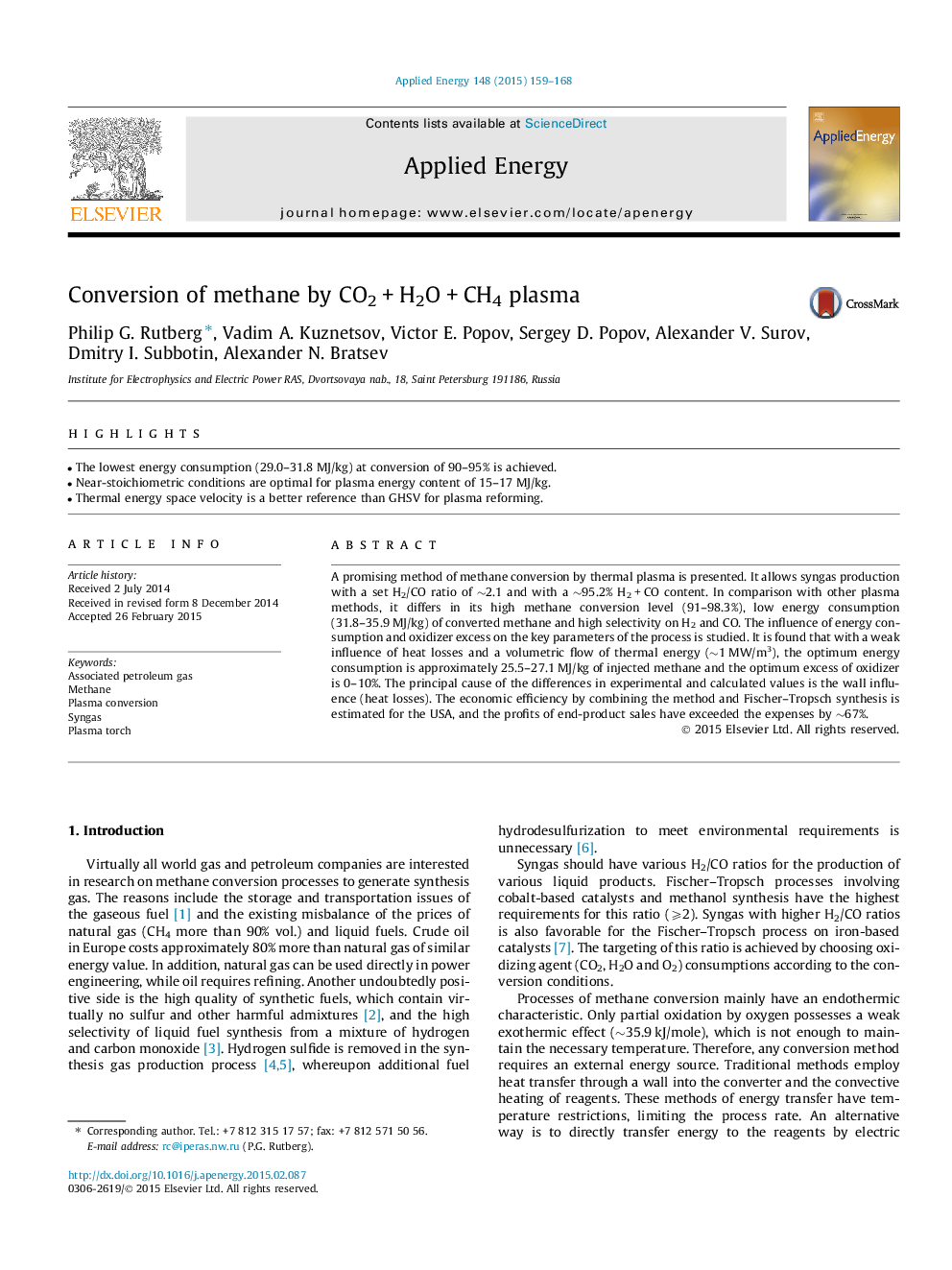| Article ID | Journal | Published Year | Pages | File Type |
|---|---|---|---|---|
| 6687266 | Applied Energy | 2015 | 10 Pages |
Abstract
A promising method of methane conversion by thermal plasma is presented. It allows syngas production with a set H2/CO ratio of â¼2.1 and with a â¼95.2% H2Â +Â CO content. In comparison with other plasma methods, it differs in its high methane conversion level (91-98.3%), low energy consumption (31.8-35.9Â MJ/kg) of converted methane and high selectivity on H2 and CO. The influence of energy consumption and oxidizer excess on the key parameters of the process is studied. It is found that with a weak influence of heat losses and a volumetric flow of thermal energy (â¼1Â MW/m3), the optimum energy consumption is approximately 25.5-27.1Â MJ/kg of injected methane and the optimum excess of oxidizer is 0-10%. The principal cause of the differences in experimental and calculated values is the wall influence (heat losses). The economic efficiency by combining the method and Fischer-Tropsch synthesis is estimated for the USA, and the profits of end-product sales have exceeded the expenses by â¼67%.
Related Topics
Physical Sciences and Engineering
Energy
Energy Engineering and Power Technology
Authors
Philip G. Rutberg, Vadim A. Kuznetsov, Victor E. Popov, Sergey D. Popov, Alexander V. Surov, Dmitry I. Subbotin, Alexander N. Bratsev,
